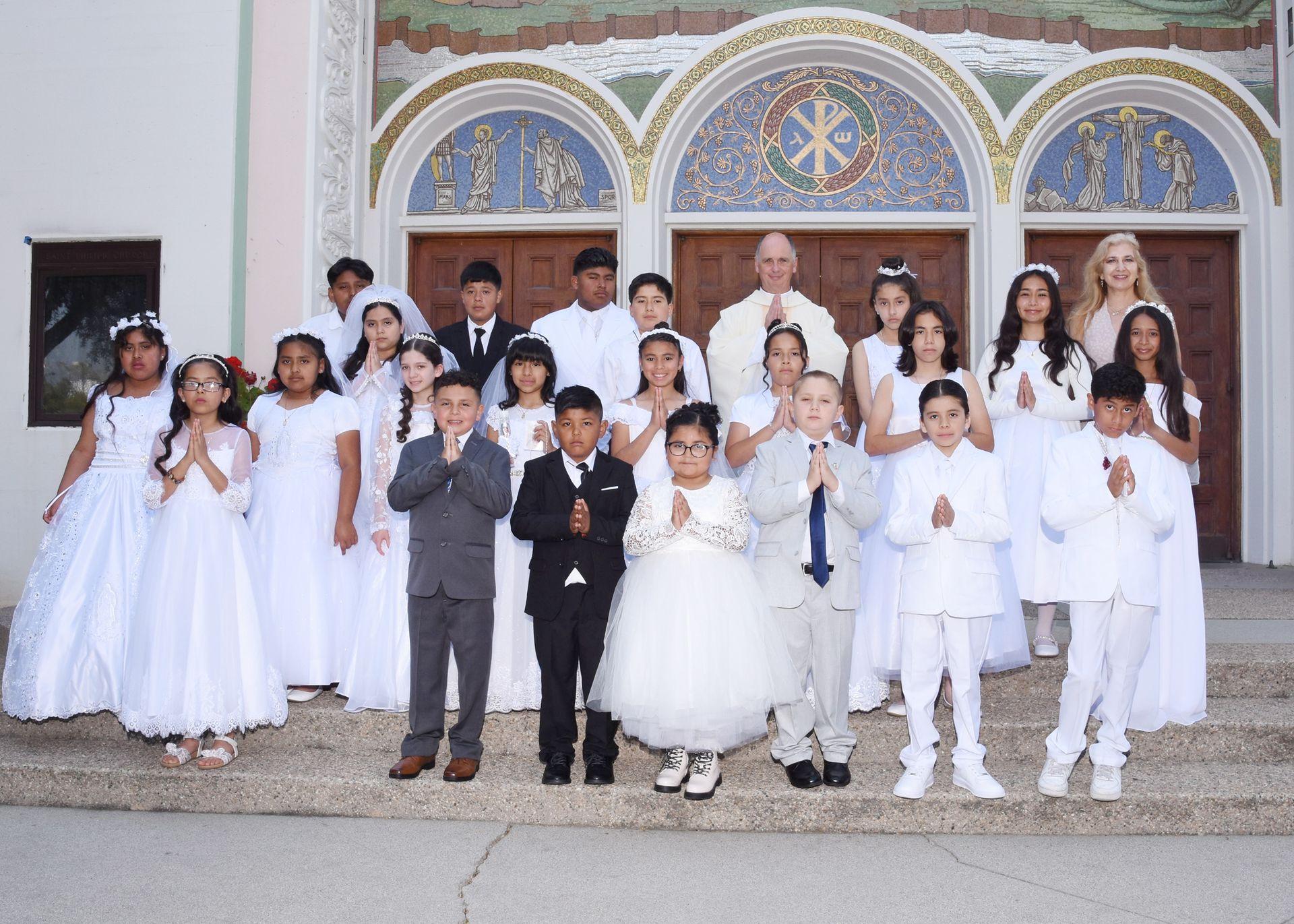first communion

What an exciting year for our Eucharist students!
Reconciliation Service will be held in the Church on January 25, 2025 at 11am.
First Communions will take place in May:
Spanish: May 3, 2025 at 2pm
English: May 10, 2025 at 2pm
Our Religious Education Program is a 2 year process of Religious Formation.
Our classes run from October thru April.
Are you ready to begin your child's journey to the Table of the Lord?
Registration begins with our Google Form found below.
¡Bienvenidas familias de habla hispana!
Nuestra clase de catecismo comienza el 1 de octubre 2024. Ofrecemos clases en español los
martes y sábados. Solo necesitan asistir un día por semana.
Primer día de clase en persona:
Las clases de los martes comienzan el 1 de octubre de 4:00 pm - 5:30 pm
Las clases de los sábados comienzan el 5 de octubre de 1:00 pm - 2:30 pm
Costo:
El costo es $125 por un estudiante y si tiene más de un estudiante se les otorga un descuento
de $25 por cada uno.
Pueden registrarse en esta página o si gusta venir en persona favor de hacer cita conmigo.
Usualmente estoy disponible por las mañanas.
CONTACTO
Horario de Oficina:
Lunes, Miércoles y Jueves: 10:00 am – 5:00 pm
Martes 11:00 am -6:30 pm
Viernes y Domingos: Cerrado
Sábados: 12:00 pm - 3:30 pm
Si tiene alguna pregunta, envíe un correo electrónico o llame a Susie:
SLopez@stphiliptheapostle.org
(626)793-0693 ext.108
REGÍSTRESE HOY
Education Religiosa de San Felipe
Coordinadora de Educación Religiosa: Susie Lopez
Correo electrónico: re@stphiliptheapostle.org
Formulario de inscripción
Comience poniendo su correo electrónico, luego desplácese hacia abajo... continúe para añadir
respuestas. El pago se puede hacer después de enviar este formulario. Vuelva a nuestro sitio
web y haga clic en Give, y elija «Faith Formation» en las Notas por favor ponga el nombre del
niño y RE. Una vez que reciba el correo electrónico de confirmación por favor, envíemela.

